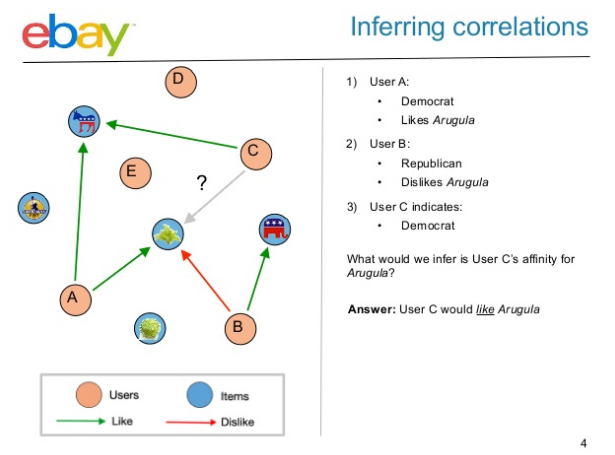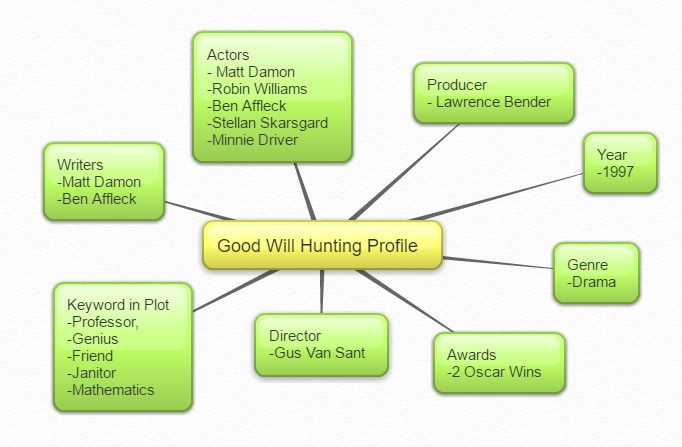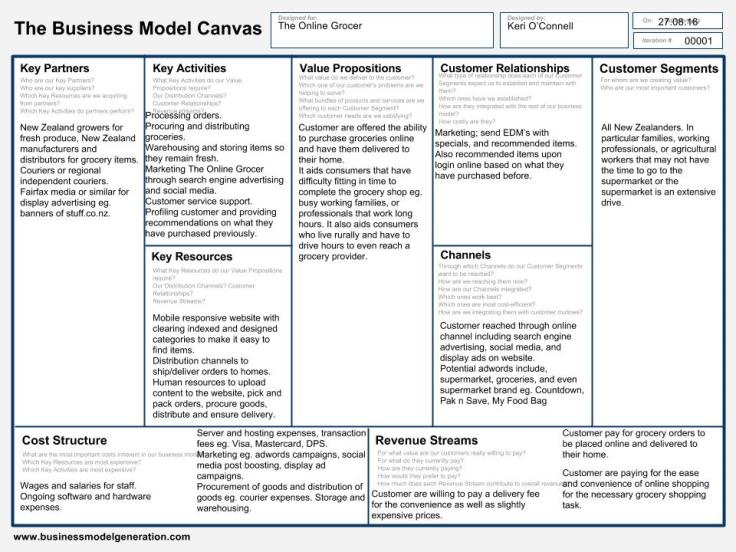Video One
Content based systems and collaborative filter are two classes of recommendation systems being used in the online space. Content based systems measure the similarity of items through looking for common features or properties (Leskovec, Rajaraman, & Ullman, 2014). Netflix is one such example that uses a content based system. “For instance, if a Netflix user has watched many cowboy movies, then recommend a movie classified in the database as having the “cowboy” genre” (Leskovec et al., 2014, p. 307).
Similarly to Netflix, Pandora Radio analyses 450 distinct musical characteristics in the Music Genome Project which recommendations are based on (Pandora, n.d.). The Music Genome Project uses the 450 distinct musical characteristics along with constant listener feedback to personalize music stations and play/recommend songs that match users tastes (Pandora, n.d.). A key implication of using a content based system is that recommendations are independent of other uses. This can be seen as particularly important as TV shows, movies and even more so music preference is highly personalised and can also be highly eclectic. A user may like to watch both Disney movies and thrillers it would be interesting if thrillers were then recommended to other Disney movie watchers. It could be suggested music taste is even more eclectic as a listener may like an artist or a song solely because it reminds them of a time or a person or an event.
In contrast to Netflix and content based systems, Ebay operates a collaborative filtering system. A collaborative filtering system is the process of measuring similarity of users by their item preference and or the similarity of the users who like them (Leskovec et al., 2014). Ebay works to find similarities between people and find similarities in patterns to other people (Planet Cassandra, 2013). Ebay, which acquired Hunch (decision engine) in 2011, profiles users and items likes and dislikes, or taste preferences, and correlates the similarities between users to make recommendations (Planet Cassandra, 2013). The image below from Planet Cassandra (2013) video clip shows how correlations are inferred given user A and C have similar profile (both Democrats). An implication of collaborative filtering systems is it can work on any item. For a site like Ebay, and also Amazon, the database of both products and users is extensive. Some items such as clothing are more or less identical resulting in very few distinct characteristics to separate them and base recommendations on. Furthermore, the collaborative filtering system can provide recommendations outside of the user’s profile. For example, a customer may not realise eBay sells a particular item but since a similar user purchased the item, it shows up as a recommendation and they are now aware of being able to buy that item on eBay.

Video 2
Item profiles are the features, attributes, and characteristics of an item that content-based recommendations can be based on (Leskovec et al., 2014). For a movie a profile is likely to consist of the actors, directors, release year, writers, genre, keywords in the plot, year etc. A profile for Good Will Hunting can be describe below from IMDB (n.d.).

The recommendations IMDB offer for Good Will Hunting include A Beautiful Mind (profile similarity of plot keywords and genre) and Saving Private Ryan (profile similarity of actors, year, genre). Similarly to movies plot keywords, documents can be profiled using keywords or unusual words that characterise the document (Leskovec et al., 2014). The profile for a document such as a wikipedia page for Good Will Hunting is likely to include the words Film (appears 63 times), Damon and Affleck (both appear 29 times), and award (appears 25 times). Document profiling begins with the document being processed and ‘stop words’ (high frequency words across all documents) are removed (Vossen, 2016). Computation of the TF.IDF score is then completed on the remaining words in the document to form a list the words from highest to lowest in TF.IDF scores. The higher the score the more unique the word and the more it is considered to characterise the document (Vossen, 2016). Similar documents can be found and recommended through comparing profiles. An implication of profiling movies and documents this way is that recommendations can be made regardless of if the user is new and unknown or existing. If a new user clicks to IMDB or Wikipedia they will be recommended movies and documents similar to the movie or document, they are looking at. Conversely, if a new movie is released it can be instantly profiled and offered as a recommendation amongst existing movies.
Video 3
Below is a business model canvas for The Online Grocer, an online supermarket which enables customers to purchase groceries online and have them deliver to their door. The Online Grocer uses elements discussed in previous blogs including, search engine advertising, display advertising, recommendation systems, and social media.

References
IMDB. (n.d.). Good Will Hunting. Retrieved from http://www.imdb.com/title/tt0119217/?ref_=nv_sr_1
Leskovec, J., Rajaraman, A., & Ullman, J. D. (2014). Mining of massive datasets. Cambridge University Press.
Pandora. (n.d.). About The Music Genome Project. Retrieved from https://www.pandora.com/about/mgp
Planet Cassandra. (2013, April 8). Graph-based Recommendation Systems at eBay by Thomas Pinckney. [Video File]. Retrieved from https://www.youtube.com/watch?v=Tg3dP2fZGSM
Vossen, G. (2016). How to Profile a Document [Powerpoint slides]. Retrieved from MSYS559-16B (NET): MyWeb website: http://www.mngt.waikato.ac.nz/myweb/driveshare/?path=(L:)%20paper$/2016/MSYS/MSYS559-16B(NET)
August 25, 2016 at 11:04 pm
Good summary of the two types of recommender systems. Very clear illustration of the different item profile for the movie and document. You can have a try on the third optional task that plug these components in the biz canvas.
LikeLike
August 26, 2016 at 9:38 pm
Thank you for your feedback. I have updated the blog to include a business model canvas for The Online Grocer.
LikeLike